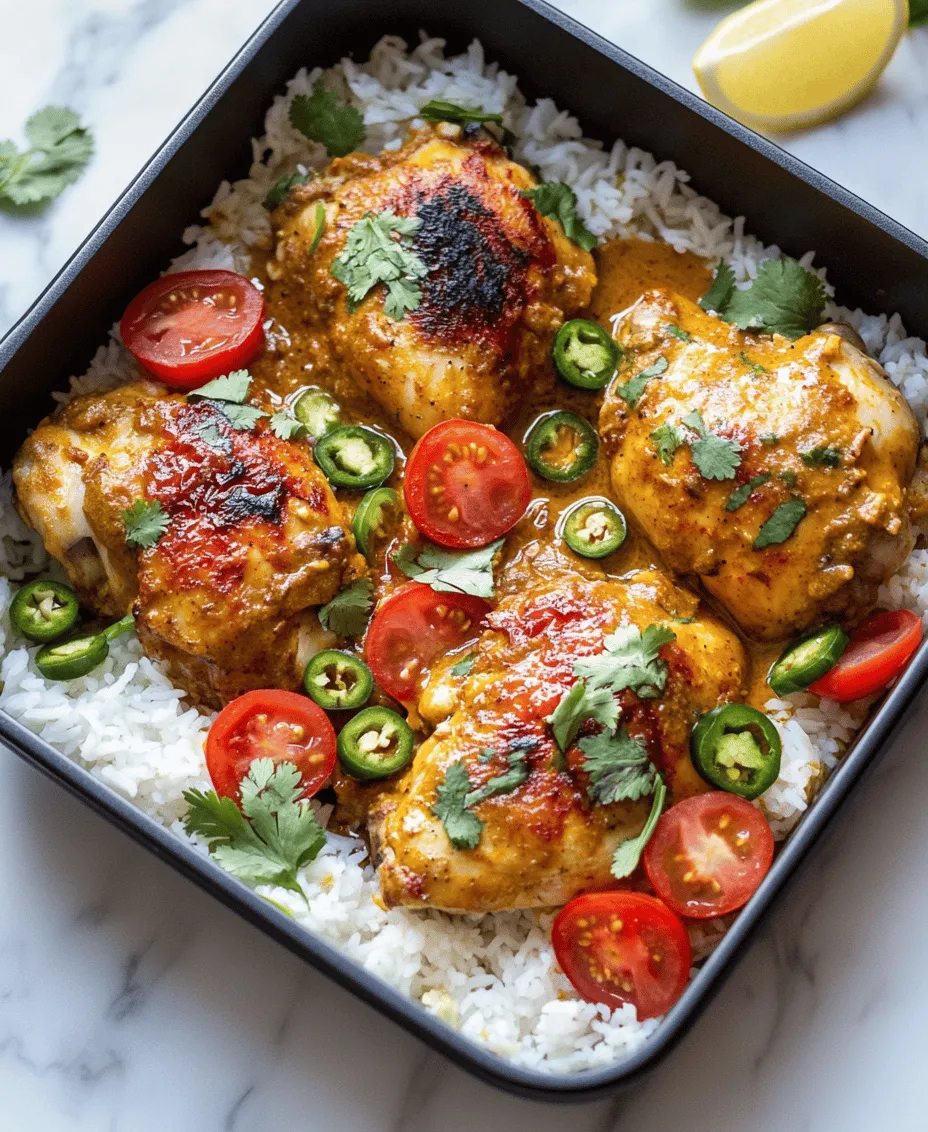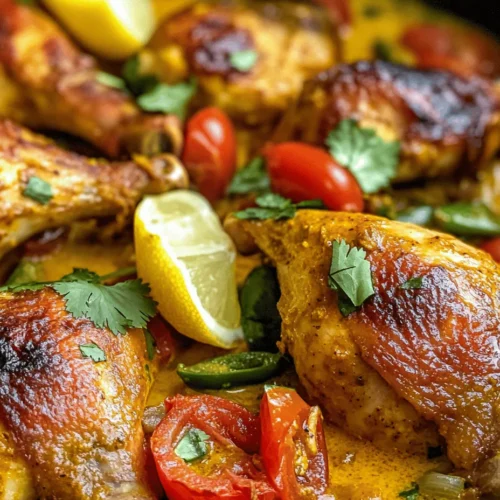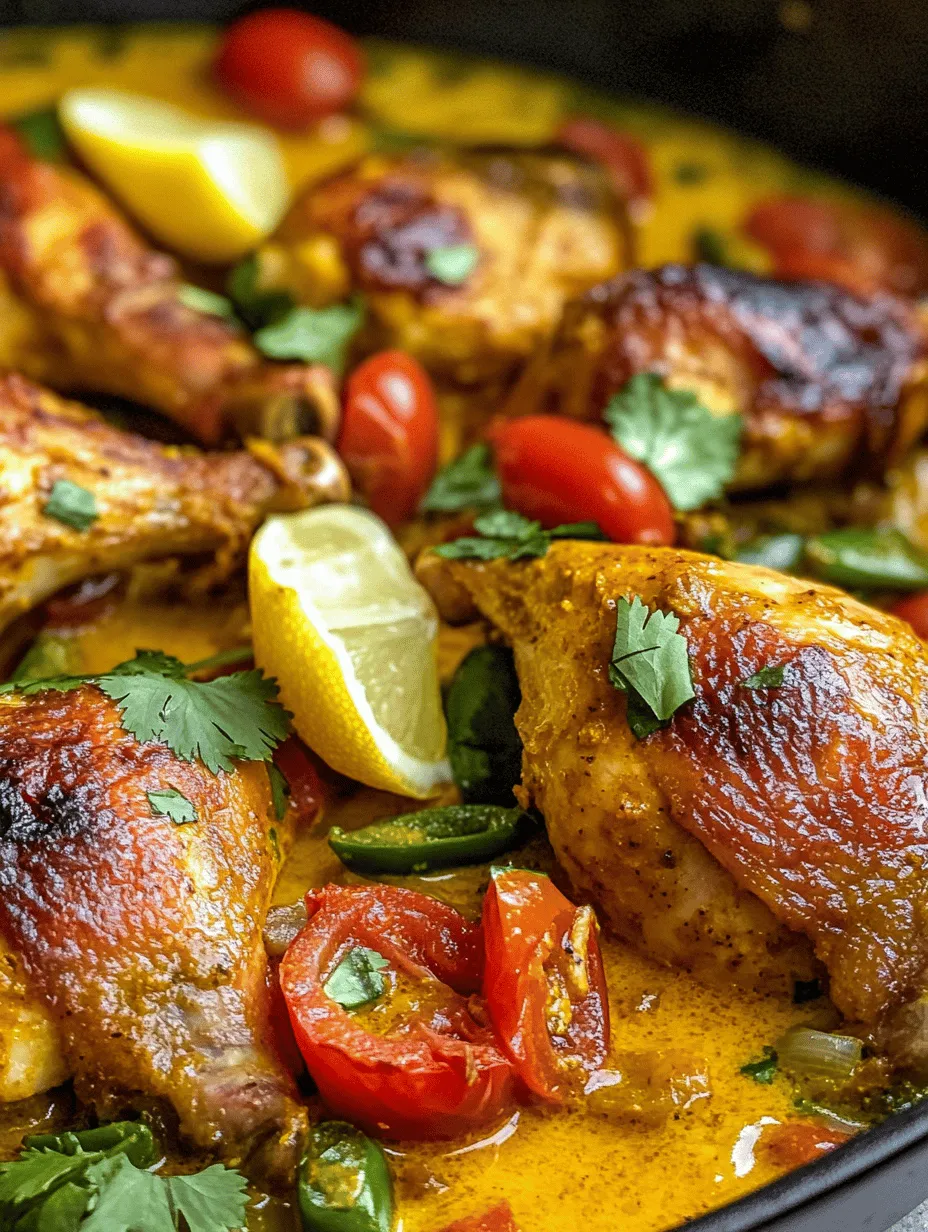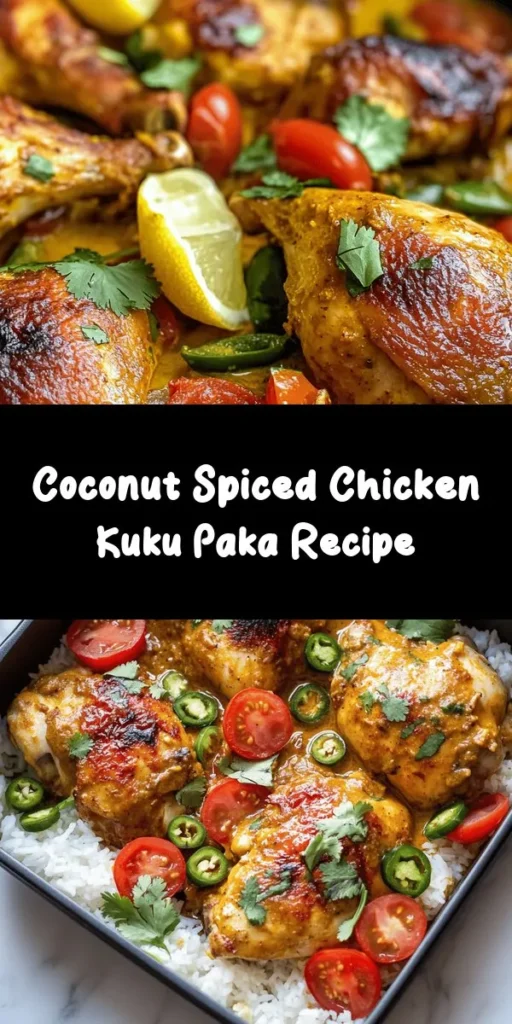In the world of culinary delights, few dishes can transport you to a tropical paradise quite like Kuku Paka. This vibrant and flavorful chicken dish, enriched with coconut milk and a medley of spices, has become a beloved staple in East African cuisine, particularly among coastal communities in Kenya and Tanzania. Kuku Paka not only boasts a rich flavor profile, but it also offers a unique blend of textures and aromas that tantalize the senses. With its roots deeply embedded in the cultural tapestry of the region, this dish embodies a fusion of Indian and African culinary traditions that speaks to the heart of communal dining.
Kuku Paka is more than just a meal; it is an experience steeped in history and culture. As you explore this recipe, you’ll uncover the layers of flavor that make Kuku Paka a standout dish, whether it’s served during festive occasions, family gatherings, or simply as a comforting weeknight dinner. The creamy coconut milk combined with aromatic spices creates a symphony of tastes, making each bite a journey of discovery. In this article, we will delve into the origins of Kuku Paka, walk you through a detailed step-by-step recipe, and explore the cultural significance of this dish. Whether you are a seasoned chef or a cooking novice, this guide will help you create a delicious meal that is sure to impress your family and friends.
The Origins of Kuku Paka
Understanding the roots of Kuku Paka can significantly enhance your appreciation for this dish. Kuku Paka represents a beautiful fusion of culinary influences, primarily stemming from the Indian diaspora and traditional African flavors. The historical context of Kuku Paka reveals how the spice trade and migration patterns have shaped the food culture in East Africa. As Indian laborers settled in coastal regions, they brought with them their rich culinary techniques and ingredients, which gradually melded with local cooking practices. The result is a dish that showcases the best of both worlds.
Historical Context
The origins of Kuku Paka can be traced back to the Swahili coast, where Indian and African cultures have coexisted for centuries. The intermingling of these cultures gave rise to a unique culinary landscape characterized by the use of spices, herbs, and fresh produce. Dishes like Kuku Paka embody this blend, showcasing the influence of Indian spices such as cumin, coriander, and turmeric alongside traditional African cooking methods. This historical confluence has not only enriched the flavor profiles of dishes like Kuku Paka but has also fostered a sense of shared culinary heritage that continues to thrive today.
Regional Variations
As Kuku Paka traveled across different regions, it adapted to local tastes and available ingredients. For instance, in coastal Kenya, you’ll find a version that emphasizes the use of fresh coconut milk and green chilies, adding a spicy kick to the dish. In contrast, the Tanzanian variation may incorporate a more mild approach with added vegetables, enhancing the overall texture and flavor complexity. These regional adaptations showcase the versatility of Kuku Paka, allowing it to resonate with diverse palates while still honoring its roots.
Cultural Significance
Kuku Paka is not merely a dish; it is a symbol of togetherness and celebration in many East African communities. It is often served during significant gatherings, weddings, and festive occasions, reflecting the communal spirit of sharing food with friends and family. The preparation of Kuku Paka is often a collaborative effort, with family members coming together to marinate the chicken, chop vegetables, and enjoy the cooking process. This shared experience fosters connections, making Kuku Paka a dish that transcends mere sustenance and becomes a part of cherished memories.
Ingredients Breakdown
A closer look at what makes Kuku Paka unique reveals the key ingredients that contribute to its distinctive flavor and texture. Each component plays a vital role in crafting this delightful dish.
Chicken
The choice of meat is fundamental to Kuku Paka, with chicken being the traditional option. Using bone-in chicken pieces not only adds flavor but also ensures that the meat remains juicy and tender during the cooking process. The marination of chicken in spices and coconut milk enhances its flavor profile, allowing the chicken to soak up the aromatic goodness that characterizes Kuku Paka.
Coconut Milk
Coconut milk is the star ingredient that elevates Kuku Paka to a creamy delight. Its rich and velvety texture balances the spices while adding a subtle sweetness that complements the heat from the chilies. The use of fresh coconut milk, if available, can provide an even more authentic taste. This ingredient not only enhances the dish’s flavor but also contributes to its beautiful appearance, giving Kuku Paka its signature creamy sauce that coats the chicken.
Spices and Aromatics
The role of spices and aromatics such as garlic, ginger, and onions is crucial in creating depth and complexity in Kuku Paka. Garlic and ginger impart a fragrant quality, while sautéed onions provide a savory base that enhances the overall flavor profile. Additionally, spices like cumin, coriander, and turmeric add warmth and richness, making each bite a flavorful adventure. The careful balance of these spices is what transforms a simple chicken dish into a culinary masterpiece.
Fresh Produce
Fresh tomatoes and cilantro are essential components that brighten the dish and add a burst of freshness. Tomatoes contribute acidity and sweetness, which help to balance the richness of the coconut milk, while cilantro provides an aromatic finish that elevates the dish. Using fresh, high-quality produce is key to achieving the best results in Kuku Paka, as it enhances both the flavor and visual appeal of the dish.
Optional Ingredients
While the traditional recipe for Kuku Paka is delicious on its own, there are several optional ingredients that can be added to customize the dish to your liking. For those who enjoy a bit of tanginess, a splash of lemon juice can brighten the flavors and cut through the richness. Additionally, the inclusion of green or red chilies can elevate the heat level, allowing you to tailor the spice to your preference. These variations make Kuku Paka adaptable, ensuring that it can cater to different tastes and dietary preferences.
Step-by-Step Instructions to Make Kuku Paka
Now that you have a deeper understanding of Kuku Paka and its ingredients, let’s dive into the step-by-step instructions to create this delectable dish. Follow these detailed guidelines to ensure your Kuku Paka turns out perfectly every time.
Marinating the Chicken
Begin by marinating the chicken pieces. Combine coconut milk, minced garlic, grated ginger, and a mixture of spices—cumin, coriander, turmeric, and salt—in a large bowl. Add the chicken pieces, ensuring they are well-coated with the marinade. Cover the bowl and let it sit for at least 30 minutes, or preferably overnight in the refrigerator. This marination process is essential, as it allows the flavors to penetrate the chicken, resulting in a more flavorful dish.
Cooking the Onions
In a large pot or deep skillet, heat some oil over medium heat. Once the oil is hot, add finely chopped onions and sauté until they turn golden brown. This step is crucial for developing the flavor base of Kuku Paka. The caramelization of the onions will bring out their natural sweetness and create a rich foundation for the dish.
Adding Tomatoes and Spices
Once the onions are golden, add chopped tomatoes to the pot. Stir well and let the mixture cook for about 5-7 minutes, allowing the tomatoes to break down and meld with the onions. During this time, add any additional spices you desire, such as chili powder or garam masala, to enhance the flavor. This step is where the dish begins to take shape, as the tomatoes and spices create a fragrant sauce that will envelop the chicken.
Browning the Chicken
Next, add the marinated chicken pieces to the pot, along with the marinade. Increase the heat to medium-high and cook the chicken until it is browned on all sides, about 5-10 minutes. This step not only adds color but also locks in the juices, ensuring the chicken remains tender and flavorful. Be sure to stir occasionally to prevent sticking and promote even cooking.
Incorporating Coconut Milk
Finally, pour in the remaining coconut milk, stirring to combine all the ingredients. Bring the mixture to a gentle simmer, then cover the pot and reduce the heat to low. Allow the Kuku Paka to cook for about 25-30 minutes, or until the chicken is fully cooked and tender. The coconut milk will create a creamy sauce that envelops the chicken, transforming it into a comforting and indulgent meal.
As the Kuku Paka simmers, the aromatic spices will fill your kitchen, beckoning everyone to gather around the table. In the next sections of this article, we will explore tips for achieving the best results, along with common questions about this delightful dish. Stay tuned for more insights into preparing the perfect Kuku Paka that will surely impress your guests and elevate your culinary repertoire.

Final Touches: How to Integrate Cilantro and Lemon for a Fresh Finish
Once your Kuku Paka has simmered to perfection, it’s time to add the final touches that will elevate its flavor profile. The integration of fresh cilantro and a squeeze of lemon juice is vital for brightening the dish and adding a layer of freshness.
1. Cilantro: Fresh cilantro not only adds a burst of color but also brings a distinctive flavor that complements the richness of the coconut milk and spices. To prepare, simply wash the cilantro leaves under cold water, pat them dry, and chop them coarsely. As the dish is nearing completion, sprinkle the chopped cilantro over the chicken, allowing it to infuse its aromatic essence into the sauce.
2. Lemon: The acidity of lemon juice balances the creamy richness of Kuku Paka. Squeeze half a lemon over the dish just before serving, ensuring that the tangy juice melds with the rich coconut flavors. This brightens the overall taste and gives the dish a refreshing finish that is essential for a well-rounded meal.
Serving Suggestions: Optimal Ways to Present Kuku Paka with Rice or Chapati
When it comes to serving Kuku Paka, presentation and pairing are key. The dish can be beautifully plated alongside steamed rice or chapati, creating a harmonious balance of flavors and textures.
1. Steamed Rice: The most classic accompaniment for Kuku Paka is steamed rice. The fluffy grains soak up the luscious coconut sauce, making each bite an explosion of flavor. For an elegant presentation, mold the rice using a small bowl or cup, turning it out onto the plate as a neat mound. Garnish with additional cilantro for a pop of color.
2. Chapati: This traditional East African flatbread is perfect for scooping up the chicken and sauce. To serve, roll out the chapati into thin rounds, cook on a hot griddle until golden brown, and keep warm in a towel. Lay a few pieces alongside the Kuku Paka on each plate, inviting diners to tear off pieces of the bread and enjoy the dish in a communal style.
3. Accompaniments: To complement the richness of Kuku Paka, consider serving a fresh salad. A simple cucumber and tomato salad dressed with a light vinaigrette adds crunch and freshness. Alternatively, a mixed green salad with a citrus dressing can enhance the tropical notes of the dish.
4. Beverage Pairings: A refreshing beverage can further enhance your Kuku Paka experience. Consider serving it with a chilled glass of mango lassi, a yogurt-based drink that balances the spices, or an iced hibiscus tea that brings a fruity tartness to the table. For those looking for a more traditional option, a light beer or a glass of white wine can also pair well with the flavors.
The Nutritional Value of Kuku Paka
Understanding the nutritional aspects of Kuku Paka allows you to appreciate this dish not only for its taste but also for its health benefits. Here’s a closer look at the ingredients that contribute to its wholesome profile.
Protein Content: Chicken is the primary protein source in Kuku Paka, offering a lean option that is rich in essential amino acids. A serving of chicken provides a substantial amount of protein, which is vital for muscle repair and overall body function. This makes Kuku Paka an excellent choice for those looking to maintain a balanced diet.
Healthy Fats: The use of coconut milk in Kuku Paka adds creaminess while also providing healthy fats. Coconut milk is rich in medium-chain triglycerides (MCTs), which can provide a quick source of energy. Unlike some other fats, MCTs are metabolized differently, promoting weight loss and providing a source of energy for the body.
Vitamins and Minerals: The vegetables and spices used in Kuku Paka contribute a wide array of vitamins and minerals. For example, garlic and ginger are not only flavor enhancers but also boast anti-inflammatory and immune-boosting properties. The addition of cilantro not only enhances flavor but also provides vitamin K, which is essential for bone health.
Overall Health Benefits: Incorporating Kuku Paka into your diet can be part of a balanced eating plan. The blend of protein, healthy fats, and nutrient-rich vegetables makes this dish satisfying and nourishing. In moderation, it can be enjoyed as part of a healthy lifestyle, providing comfort and flavor without compromising nutritional value.
Pairing Kuku Paka with Side Dishes
A well-rounded meal includes not just the main dish but also complementary sides that enhance the dining experience. Here are some suggestions for the best accompaniments to serve with Kuku Paka.
Steamed Rice: As mentioned earlier, steamed rice is the classic pairing for Kuku Paka. The fluffy texture of the rice pairs beautifully with the rich coconut sauce, making every bite delightful. You can also consider flavored rice options, such as coconut rice or saffron rice, to add an extra layer of flavor to your meal.
Chapati: This versatile flatbread is another excellent option for serving with Kuku Paka. Its slightly chewy texture and ability to soak up the sauce make it a favorite among many. For a homemade touch, you can prepare chapati by mixing whole wheat flour with water, rolling it into thin circles, and cooking it on a hot skillet until it puffs up.
Salad Ideas: To provide a contrast to the rich flavors of Kuku Paka, consider a side salad. A simple mixed green salad with arugula, cherry tomatoes, and cucumber dressed in a lemon vinaigrette can offer a refreshing crunch. You can also explore adding fruits like mango or avocado to your salads to enhance the tropical vibe of the dish.
Beverage Pairings: In addition to the drinks mentioned, you might also explore serving Kuku Paka with a light, fruity cocktail or a refreshing mocktail. Tropical flavors like pineapple or passionfruit can complement the coconut notes beautifully.
Cultural Etiquette When Serving Kuku Paka
Kuku Paka is more than just a dish; it embodies the rich cultural heritage of East Africa. Understanding the social aspects of enjoying this meal can enhance your dining experience.
Presentation Styles: Traditionally, Kuku Paka is served in a communal style, where everyone shares from a large serving platter. This encourages conversation and connection. When presenting the dish, consider serving it in an attractive bowl that showcases the vibrant colors of the chicken and sauce, garnished with fresh cilantro.
Family and Community: Kuku Paka holds a special place in East African gatherings, often served during celebrations and family get-togethers. When you cook this dish, think of it as an opportunity to bring family and friends together, fostering a sense of community and togetherness.
Sharing and Serving: In East African dining etiquette, it is customary to serve from the right and ensure that everyone has enough. Encourage guests to take what they enjoy, and consider offering a variety of sides so that everyone can customize their meal to their liking. It’s also common to eat with your hands, particularly with chapati, reinforcing the communal and familial aspect of the meal.
Conclusion: The Timeless Appeal of Kuku Paka
Kuku Paka is more than just a meal; it is a celebration of culture, community, and culinary artistry. With its rich flavors and fragrant spices, this Coconut Spiced Chicken Delight offers a taste of the tropics that invites you to gather around the table with loved ones. The combination of protein-rich chicken, healthy fats from coconut milk, and a variety of spices not only makes this dish delicious but also nutritious.
By following the easy-to-follow recipe and embracing the cultural significance of Kuku Paka, you can recreate this iconic dish in your own kitchen. Whether you’re enjoying it with steamed rice, chapati, or a fresh salad, the experience of preparing and sharing this meal is sure to bring warmth and comfort to your dining table. Embrace the journey of cooking Kuku Paka, and enjoy the rich flavors and cultural heritage it represents.



